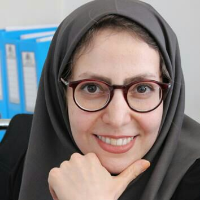Presenting a predictive model for sentiment analysis of urban multi-modal data with deep learning Case study: Iranian formal megacities
Urban planning and design issues are highly complex, making it challenging to achieve a comprehensive understanding of these issues, especially on a large scale, using traditional urban planning methods alone. Therefore, the integration of data science and modeling presents a promising approach for comprehending urban issues. Extensive research and reports on real urban projects implemented across various countries suggest that machine learning and deep learning techniques have the potential to effectively address urban problems and offer additional benefits such as reducing economic costs associated with inefficiencies, improving operational speed, and enhancing predictability. The integration of machine learning and deep learning can be utilized in the evaluation, design, and post-implementation stages of urban planning and design processes. User experience, including environmental stress, happiness, and fear, significantly influences the character and activities within urban spaces. Hence, it is crucial for urban designers to create new spaces or revitalize existing ones in a way that evokes a positive emotional response and a sense of belonging among users. Numerous studies have explored this subject, primarily focusing on evaluating people's emotions within physical environments and occasionally within virtual settings, using AI-based methodologies. Sentiment analysis or opinion mining, previously employed before the rise of social media, is now being investigated and analyzed using computational methods with the aid of vast amounts of data published on social media platforms. This research domain, widely used in economic, marketing, political, and social research, has increasingly permeated the realm of urban studies. However, it is relatively new within the field of urban studies, with only a limited number of research studies conducted thus far. The main objective of this research is to develop a predictive model for understanding users' emotional responses towards urban spaces through an analysis of multi-modal data, including images and textual content, published in virtual spaces. This study incorporates two notable innovations:The use of a machine learning approach in sentiment analysis of multi-modal data on an urban scale, which has been explored in data science research but remains insufficiently explored in the realm of urban planning and management in Iran. The creation of a dataset comprising textual and visual data relevant to urban environments. It aims to present a predictive model that effectively analyzes sentiment in textual and visual media data derived from Twitter. The research employs a quantitative methodology and utilizes a supervised deep learning technique. The case study encompasses multi-modal urban data from eight megacities in Iran, collected over a ten-year period until December 2021. An algorithmic hybridization based on the Convolutional Neural Network (CNN) architecture has been developed and employed to train the textual data, resulting in an accuracy rate of 77%. Additionally, the visual data has been trained using three distinct algorithms, with VGG19 demonstrating superior performance and achieving an accuracy rate of 88%. A hybrid algorithm has been devised to train the multi-modal data, yielding an accuracy of 66%. Subsequently, a combination model leveraging pre-trained VGG19 models alongside the developed text combination model has been implemented, achieving an elevated accuracy of 81%. These outcomes demonstrate the machine's capacity to predict sentiment polarity in textual-visual data related to cities.
-
Analysis of the Effect of the Event on the Creation of Collective Memory in Urban Space With Emphasis on the Reception Spaces of Different Socio-Religious Groups; Case Study: 30 Tir St., Tehran.
*, Sahel Minaei
Journal of Architecture and urbanism, -
A predictive model for analyzing users’ perception of the cities based on the Twitter; Case studies: Iran metropolitans
*
Journal of Iranian Architecture and Urbanism,



